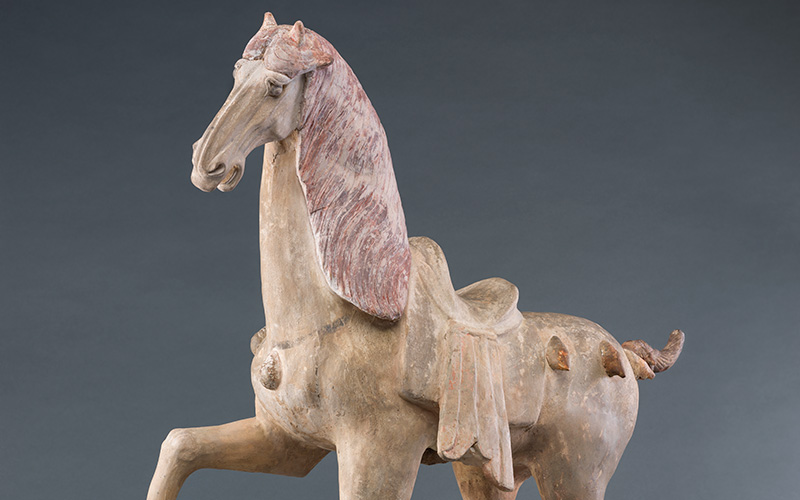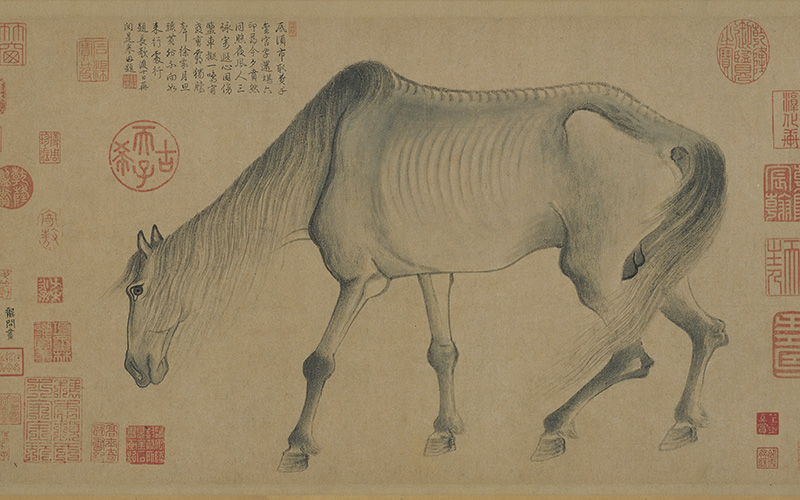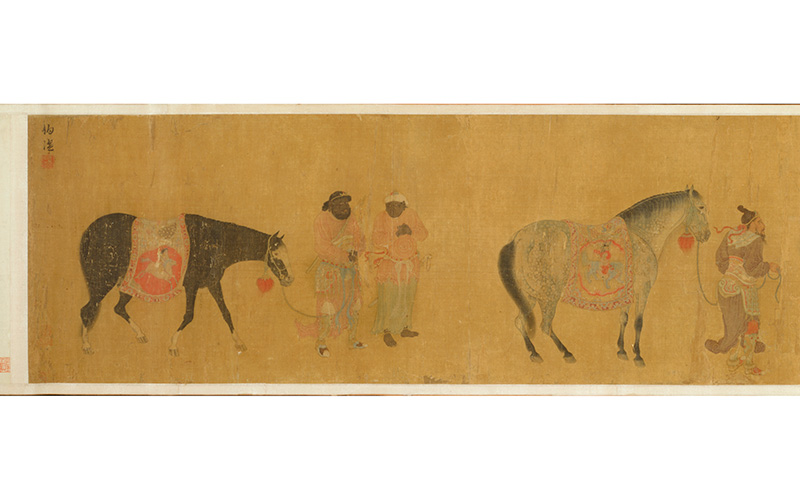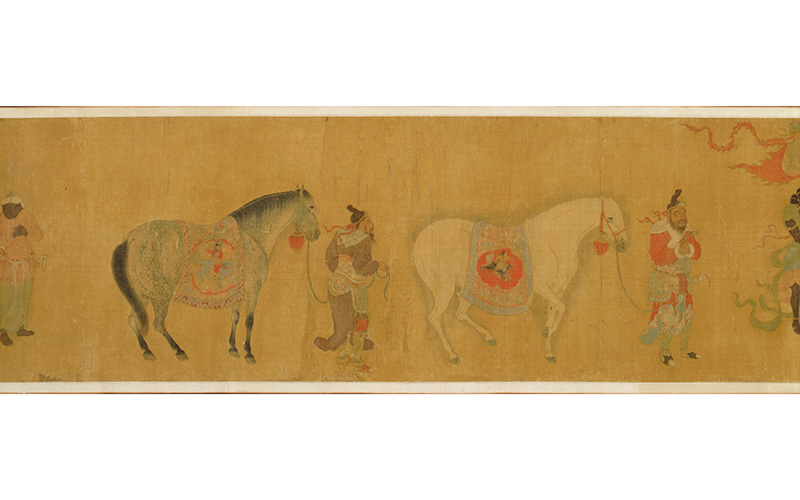- Art Home
- Exhibitions
-
Explore the Collection
- Explore the Collection Home
- African Art
- American Paintings, Sculpture and Drawings
- Contemporary
- Decorative Arts and Design
- East Asian Art
- European Paintings, Sculpture and Drawings
- Fashion Arts and Textiles
- Musical Instruments
- Indigenous American Art
- Photography
- Prints
- South Asian Art, Islamic Art and Antiquities
- Provenance and Cultural Property
- Conservation
- Meet the Curators
- Digital Resources
- Art Bridges Cohort Program
- Events & Programs Home
- Calendar
- Accessibility
- Adults
-
Families & Teens
- Families & Teens Home
- 10x10 Teen Art Expo
- Art on the Rise
- Art Together: Art Making for Families with Children Ages 3–5
- Boy Scouts / Girl Scouts
- CAM Kids Day
- Family Storytime and Gallery Walk
- Family Studio: Art Making for Families with Children Ages 6–12
- Games in the Galleries
- Members-Only Baby Tours
- Public Baby Tours
- REC Reads
- Rosenthal Education Center (REC)
- See Play Learn Kits
- Summer Camp
- Teachers
- Community Outreach
- Fundraisers
- Plan Your Own Event

- Art Home
- Exhibitions
-
Explore the Collection
- Explore the Collection Home
- African Art
- American Paintings, Sculpture and Drawings
- Contemporary
- Decorative Arts and Design
- East Asian Art
- European Paintings, Sculpture and Drawings
- Fashion Arts and Textiles
- Musical Instruments
- Indigenous American Art
- Photography
- Prints
- South Asian Art, Islamic Art and Antiquities
- Provenance and Cultural Property
- Conservation
- Meet the Curators
- Digital Resources
- Art Bridges Cohort Program
- Events & Programs Home
- Calendar
- Accessibility
- Adults
-
Families & Teens
- Families & Teens Home
- 10x10 Teen Art Expo
- Art on the Rise
- Art Together: Art Making for Families with Children Ages 3–5
- Boy Scouts / Girl Scouts
- CAM Kids Day
- Family Storytime and Gallery Walk
- Family Studio: Art Making for Families with Children Ages 6–12
- Games in the Galleries
- Members-Only Baby Tours
- Public Baby Tours
- REC Reads
- Rosenthal Education Center (REC)
- See Play Learn Kits
- Summer Camp
- Teachers
- Community Outreach
- Fundraisers
- Plan Your Own Event
Galloping Through Dynasties
Galloping Through Dynasties
- Home
- Plan Your Visit
-
Art
- Art Home
- Exhibitions
-
Explore the Collection
- Explore the Collection Home
- African Art
- American Paintings, Sculpture and Drawings
- Contemporary
- Decorative Arts and Design
- East Asian Art
- European Paintings, Sculpture and Drawings
- Fashion Arts and Textiles
- Musical Instruments
- Indigenous American Art
- Photography
- Prints
- South Asian Art, Islamic Art and Antiquities
- Provenance and Cultural Property
- Conservation
- Meet the Curators
- Digital Resources
- Art Bridges Cohort Program
-
Events & Programs
- Events & Programs Home
- Calendar
- Accessibility
- Adults
-
Families & Teens
- Families & Teens Home
- 10x10 Teen Art Expo
- Art on the Rise
- Art Together: Art Making for Families with Children Ages 3–5
- Boy Scouts / Girl Scouts
- CAM Kids Day
- Family Storytime and Gallery Walk
- Family Studio: Art Making for Families with Children Ages 6–12
- Games in the Galleries
- Members-Only Baby Tours
- Public Baby Tours
- REC Reads
- Rosenthal Education Center (REC)
- See Play Learn Kits
- Summer Camp
- Teachers
- Community Outreach
- Fundraisers
- Plan Your Own Event
- Give & Join
- About
- Tickets
- Calendar
- Exhibitions
- Blog
- Shop

Dancing Horse, Tang dynasty (618–907), 8th century, ceramic, Cincinnati Art Museum, Gift of Carl and Eleanor Strauss, 1997.53

Gong Kai 龔開 (1222–1307), Noble Horse (Jungutu), Yuan dynasty (1279–1368), handscroll, ink on paper, Osaka City Museum of Fine Arts, Abe Collection

Ren Bowen 任伯温 (active late 14th century), Tribute Bearers, Yuan dynasty (1279–1368), handscroll, ink and color on silk, Asian Art Museum of San Francisco, The Avery Brundage Collection, B60D100. © Asian Art Museum of San Francisco

Ren Bowen 任伯温 (active late 14th century), Tribute Bearers, Yuan dynasty (1279–1368), handscroll, ink and color on silk, Asian Art Museum of San Francisco, The Avery Brundage Collection, B60D100. © Asian Art Museum of San Francisco

Ren Bowen 任伯温 (active late 14th century), Tribute Bearers, Yuan dynasty (1279–1368), handscroll, ink and color on silk, Asian Art Museum of San Francisco, The Avery Brundage Collection, B60D100. © Asian Art Museum of San Francisco

Unidentified Artist, Rubbing of a Stone Tablet Dedicated to Guan Yu, Ming dynasty (1368–1644), hanging scroll, ink on paper, Cincinnati Art Museum, Gift of Lucille Dixon, 2019.300

Zhao Mengfu (attr.) 趙孟頫 (舊傳) (1254–1322), Horses and Grooms under Willow Trees, Ming dynasty (1368–1644), 15th century, hanging scroll, ink and color on silk, Museum of Fine Arts, Boston, Special Chinese and Japanese Fund, 17.187. Photograph © 2022, Museum of Fine Arts, Boston
Galloping Through Dynasties
October 7, 2022–January 1, 2023
Schiff Gallery (Gallery 234)
Free admission.
Press Release (PDF)
Galloping Through Dynasties explores the evolution of Chinese horse painting and sculpture throughout 3000 years of Chinese history. The 60 works of art on display—drawn from the collections of leading U.S. and Asian museums—decode the symbolic language of horses in Chinese art and reveal rich information about China’s history and culture.
From the ancient Zhou dynasty (circa 1045–771 BCE) to the Qing dynasty (1644–1911), images of horses form an allegorical language through which many political and social aspects of Chinese history are reflected. The Chinese emperors’ passion for fine horses further enhanced its prominent status in Chinese art. Over time, the rich symbolic content of horse imagery was matched by the increasingly diversified styles and personal expressions of the artists who painted this iconic animal.
Galloping Through Dynasties is the first of its kind to present to museum audiences the many recent research findings on Chinese horse painting and sculpture. Through carefully selected examples, this exhibition—only at the Cincinnati Art Museum—illustrates how the horse played an important role in shaping the sociopolitical world of China and provides museum visitors with new insights into unique aspects of Chinese art and culture.
Members Opening
Thursday, October 6, 2022, 5–7 p.m.
Fountain Room (Gallery 126)
Free for Members.
Galloping Through Dynasties explores the evolution of Chinese horse painting and sculpture in both their symbolic and stylistic aspects throughout 3,000 years of Chinese history. More than 60 paintings and other artworks drawn from the collections of leading museums in both the U.S. and Asia—including the Cincinnati Art Museum—decode depictions of the horse in Chinese art, revealing rich information about China’s history and culture.
On Thursday evening, October 6, members are invited to enjoy snacks and a cash bar in the Fountain Room (Gallery 126).
The Seventh Annual Asian Art Lecture
Galloping Through Dynasties
Sunday October 16, 2022, 2 p.m.
Fath Auditorium
Free. Seating is first come, first served.
The horse is one of the oldest and most interesting painting subjects in China. From the ancient Zhou dynasty (ca. 1045–771 BC) to the Qing dynasty (1644-1911), the horse, which played an important role in shaping the sociopolitical world of China, has formed an engaging symbolic language. In this program, Dr. Sung will explores the evolution of Chinese horse painting in both its symbolic and its stylistic aspects throughout Chinese history. This lecture will also include many of her recent research findings and decode the symbolic language of Chinese horse painting to reveal rich information about Chinese history and culture.
Please join for a reception following the lecture.
This lecture is sponsored by the Cincinnati Asian Art Society.
CAM Kids Day: Four Legged Friends
November 5, 2022, 11 a.m.–12 p.m.
Hop, prance or leap your way into the museum for a fun day with your family. Spend the morning in our galleries with hands-on preschool activities themed around our favorite animals from 11 a.m.–12 p.m, then enjoy a family-friendly performance at 1:30 p.m. Don't miss out on the hands-on art-making in the Rosenthal Education Center or the My CAM custom scavenger hunts available all day.
Galloping through Dynasties by Hou-mei Sung
Galloping through Dynasties investigates the history of Chinese horse painting, a subject heretofore little studied. Organized chronologically, the volume explores the following themes: Celestial Horse and Imperial Horse Portraits in Early China, The Song Aesthetics and New Genres of Horse Painting, Transformation of the Horse Image in the Yuan Dynasty and The Symbolic Language of Horse Painting in the Ming and Qing Dynasties. The catalog offers new insights into how the Chinese define horses through their concept of nature and how Chinese horse paintings evolved in both their stylistic and symbolic contents and formed a language to convey political and social messages.
Generously supported by:
E. Rhodes and Leona B. Carpenter Foundation
Jeanann Gray Dunlap Foundation
Elizabeth Hoffman Huddleston and Frazier Huddleston
Share Your Feedback
Did you see Galloping Through Dynasties? Let us know what you thought.
Cincinnati, OH 45202
Toll Free: 1 (877) 472-4226
Museum Hours
Museum Shop
Terrace Café
Library
The Cincinnati Art Museum is supported by the generosity of tens of thousands of contributors to the ArtsWave Community Campaign, the region's primary source for arts funding.

Free general admission to the Cincinnati Art Museum is made possible by a gift from the Rosenthal Family Foundation. Exhibition pricing may vary. Parking at the Cincinnati Art Museum is free.
Generous support for our extended Thursday hours is provided by Art Bridges Foundation’s Access for All program.

General operating support provided by:



